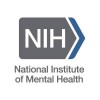
Adolescent Trauma Recovery and Stress Disorders Collaborative Care (ATRSCC) Model Program Trial...
Post-traumatic Stress DisorderAlcohol Abuse1 moreRecent needs assessments suggest that difficulties exist in care coordination between emergency medical services (EMS) systems and primary care for injured adolescents with alcohol problems and post-traumatic stress disorder (PTSD). This project will implement, evaluate, and disseminate the adolescent trauma support service model program that aims to enhance coordination between EMS systems and primary care/community services.

Effectiveness of Trauma-Focused Cognitive Behavioral Therapy in Treating Children With Post-Traumatic...
Post-Traumatic Stress DisorderThis study will compare the effectiveness of trauma-focused cognitive behavioral therapy versus standard care in treating children with post-traumatic stress disorder.

DoD PTSD November 13 - Information Processing Modification in the Treatment of PTSD
Stress DisordersPost-TraumaticThe purpose of this study is to determine whether a computerized intervention designed to change the nature of attention biases will be effective in reducing the symptoms of post traumatic stress disorder (PTSD) in American combat veterans returning from the wars in Afghanistan and Iraq.

Treatment for Veterans With Military Sexual Trauma
Stress DisordersPost-Traumatic3 moreThe purpose of this study is to evaluate the effectiveness of Cognitive Processing Therapy (CPT) versus Present-Centered Therapy (PCT) in treating current post-traumatic stress symptoms associated with sexual assault that occurred while veterans were serving in the military.

MDMA-Assisted Psychotherapy in People With Posttraumatic Stress Disorder
Posttraumatic Stress DisorderThis randomized, double-blind placebo-controlled study assessed the safety and effectiveness of MDMA-assisted therapy among people with chronic, treatment-resistant PTSD, including veterans. The study enrolled 23 participants. Participants were assigned to receive either therapy with a single divided dose of MDMA or lactose placebo during two blinded experimental sessions spaced three to five weeks apart during Stage 1 of the study. During these experimental sessions, participants received an initial dose of 125 mg of MDMA followed by a supplemental dose of 62.5 mg of MDMA, or they received initial and supplemental doses of inactive placebo.

Treatments for Psychogenic Nonepileptic Seizures (NES)
ConvulsionNon-Epileptic4 moreThe investigators propose that treatment of the comorbid disorders (depression, anxiety, and impulsivity) with sertraline in patients with lone psychogenic nonepileptic seizures (NES), will result in a decreased number of NES. The purpose of this study is to provide pilot testing and data to inform the future randomized controlled trial based on the hypothesis.

Brief Integrative Therapy for Post-Traumatic Stress Disorder
Stress DisordersPost-TraumaticThe purpose of this study is to refine Brief Integrative Therapy (BIT) and to evaluate its effectiveness in treating women with Post-Traumatic Stress Disorder (PTSD) following childhood sexual abuse. This study will also promote the development of skills that are necessary for increasing quality of life and improving self-esteem.

Evaluation of Stress Disorders
Acute Traumatic Stress DisordersPost-Traumatic Stress DisordersThe purpose of this study is to examine the short-term consequences of trauma and to determine the effectiveness of the drug sertraline in preventing and treating post-traumatic stress disorder (PTSD) and acute stress disorder (ASD) symptoms. ASD and PTSD are common consequences of exposure to traumatic events. Despite growing evidence of neurobiological dysfunction in ASD and PTSD, the origin of these disorders is still unknown. This study will attempt to identify psychophysiological markers of ASD and find an effective treatment for its symptoms. Victims of serious motor vehicle collisions will be evaluated with clinical assessments and standardized questionnaires within 2 weeks after the accident. Symptoms of exaggerated startle, emotional reactivity to trauma-related and trauma-unrelated cues, and cerebellum functioning will be evaluated. Participants will be randomized to receive either sertraline or placebo (an inactive sugar pill) for 8 weeks. Psychometric testing and psychological evaluations will be conducted 4, 10, and 14 weeks after the accident and after a 2-week taper of the study medication.

Cognitive Processing Therapy Versus Prolonged Exposure for Treating Women With Post-Traumatic Stress...
Post-Traumatic Stress DisorderThis study will evaluate the effectiveness of cognitive processing therapy versus prolonged exposure therapy in treating women with post-traumatic stress disorder (PTSD) brought on by sexual assault.

Exposure Therapy for Chronic PTSD: Efficacy and Mechanisms
Combat DisordersPosttraumatic Stress DisorderThe goals of the proposed research are to produce preliminary evidence of PE with OEF/OIF veterans with PTSD and to examine cognitive, psychophysiological, and neuroendocrine mechanisms of change in PTSD treatment. In brief, 36 OEF/OIF veterans with chronic PTSD or PTSS of at least 3 months duration will be randomly assigned to 15 sessions of either PE or TAU (see below for descriptions of the interventions). All veterans will receive psychobiological assessments at pre treatment, mid treatment, post treatment, 3 months, and 6 months follow-up. Each of these assessments will cover in 2 sessions on separate days and will include interview and self-report of symptoms (i.e., PTSD, depression, and general anxiety severity), self-report of PTSD-related cognitions, psychophysiological (i.e., heart rate, skin conductance, respiration, and end-tidal CO2) assessment during neutral and trauma scripts, and assessment of salivary cortisol during neutral and trauma scripts. Also, on the morning prior to each laboratory assessment, patients will collect salivary cortisol at the moment of waking and 30 and 45 minutes post-walking. In addition to these assessments, patients assigned to PE will collect salivary cortisol during three imaginal exposure sessions (sessions 3, 9, and 15).
